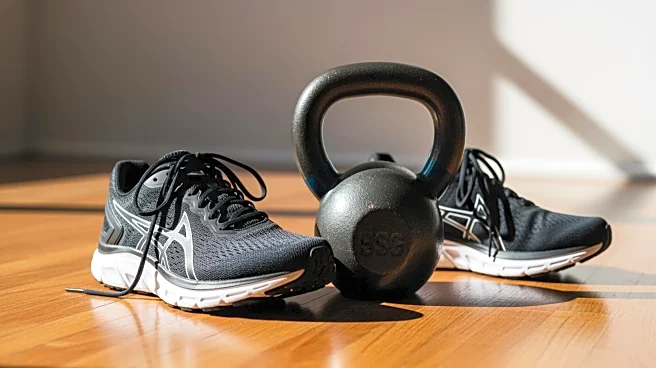What's Happening?
Running coach and sports scientist Niklas Rossner has outlined a comprehensive training plan aimed at improving the average 1-mile time for men, which currently stands at 6 minutes and 38 seconds according
to Running Level. Rossner emphasizes the importance of building a strong aerobic engine, anaerobic power, strength, running economy, and mastering pacing to achieve faster mile times. His plan includes VO2 max intervals, tempo-style work to raise lactate threshold, short all-out efforts for anaerobic power, and complex strength training to enhance running economy. The training regimen is designed to help runners improve their speed and efficiency, ultimately leading to better performance in mile runs.
Why It's Important?
Improving mile times is significant for runners and hybrid athletes as it serves as a benchmark for physical fitness and performance. The training plan proposed by Rossner not only aims to enhance speed but also focuses on overall running economy, which is crucial for energy efficiency during runs. By incorporating strength training and strategic pacing, athletes can achieve better results, potentially leading to improved performance in other running events and sports. This approach can benefit those looking to compete at higher levels or simply improve their personal bests, making it relevant for both amateur and professional athletes.
What's Next?
Athletes and coaches may adopt Rossner's training plan to optimize their mile running performance. As runners implement these strategies, they might see improvements in their speed and endurance, potentially influencing training methods across various sports disciplines. The focus on strength training and pacing could lead to broader applications in athletic training, encouraging a more holistic approach to fitness. Additionally, as more runners achieve faster mile times, there could be increased interest in competitive mile events, further promoting the sport.
Beyond the Headlines
The emphasis on strength training for running economy highlights the evolving understanding of athletic performance, where traditional endurance training is complemented by power and strength exercises. This shift could influence how athletes train across different sports, integrating more diverse workout routines to enhance overall performance. The approach also underscores the importance of scientific research in sports training, as Rossner's methods are backed by studies showing the benefits of complex training for anaerobic power.











